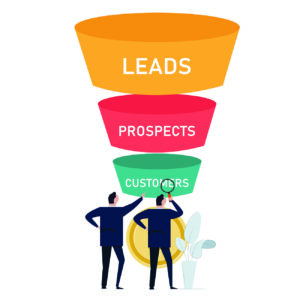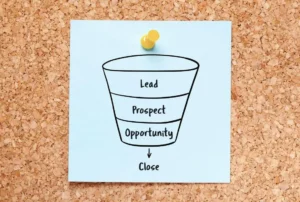- March 7, 2024
- Posted by: Mahi Muskan
- Category: B2B Industry Insights

Lead Vs Prospect: Lead generation in B2B
Table of Contents
Hi, Business enthusiasts. We understand that B2B lingos can be as puzzling as coffee machines on a monday morning. If you know what I mean. But let’s handle it like the one on tuesday, step-by-step. First thing first. What is B2B?
We have all heard these lingos way too often. B2B means business to business- It’s the realm where businesses interact with other businesses, a bit like a giant networking event, minus the awkward small talk.
Now that this is clear. Let us quickly move to the main part of this topic. Do we know what Lead and Prospect is? We do, but how are these terms different and how do these terms being called differently in a B2B landscape make any difference in the job getting done? Because it all just seems like semantics.
Now, this discussion matters because both of them represent a different stage in the sales funnel. They deserve different levels of effort and attention which helps the conversion get better and makes it easier.
What is your sales funnel? Your funnel is a representation of the number of potential customers you have in each stage of your pipeline and the conversion rate at each stage.
When we are talking about leads and Prospects.
– A lead is when it is at the top of the funnel, it is a potential customer who we expect might reasonably make a purchase but as soon as they qualify it turns into a prospect who upon expressing interest turns into an opportunity.

In any business Resources time and energy are everything. It is very important to focus on the right energy at the right time. This differentiation of lead and prospect helps in focusing on the right part thus closing more deals.
Would you arrange a call with the Sales VP of your company with a lead? No, you wouldn’t. It is not an opportunity yet and would be a waste of time and energy which would rather be used on a qualified opportunity that is interested in hearing out your proposal. There is more success in a sales process when they are organized and the salesperson knows which part to focus on and how to proceed with each qualification process.
Let’s make it clearer- Leads And Prospects
|
Prospects |
Leads |
|
Potential partners in the B2B journey. |
Business entities showing interest but not fully committed. |
|
Align with Ideal Customer Profile. |
May exhibit interest but not a perfect fit yet. |
|
Crucial; ensures efforts focus on promising opportunities. |
Initial qualification; determines readiness to move to the next stage. |
|
Explored and identified potential. |
The initial stage of exploration is not fully developed. |
|
Minimal; the focus is on qualification. |
Essential; involves building a relationship and guiding through the buyer’s journey. |
|
Not typically scored as they are already considered potential. |
Crucial; assigns values to prioritize and identify the most promising leads. |
How to convert Leads Into prospects
Now that we have understood the difference we need to know how exactly Leads are converted into Prospects. The answer is easy – Qualify them. But how do we do that? Remember when you are qualifying a lead you are determining that they are a good fit for using your product or service.
Here are a few things you can do to qualify them:
Create- Learn – Commit
1. Create the ICP - Ideal customer profile
- Well, it does sound simple but there are ways you decide your ICP and then that further helps in pushing the leads to prospect.
- Define your customer – Find your previous customers who are satisfied and look for similarities in them with the lead such as geography, pain points, budget, industry, and company size.
- Market Research: Find target companies that might use your product and services. While you are doing this, also analyze competitors and their customer base.
- Identify – The demographic criteria, pain points and business needs need to be identified before moving to the next stage. Pinpointing behavioral aspects might help even more
- Create a Persona: Creating a persona helps in identifying influencers and decision makers alongside the details like job title, geography etc.
2. Learn about their needs
- (image credits: Nutshellcrm.com)It is very important to learn about your leads to move them to the next stage of the funnel before you put more effort into them. This part can be done with the help of whitepapers, case studies and a few qualifying questions in return for their email addresses.
You can get information about their budget etc and paint a clear picture giving an idea if they are ready to be your prospects.

3. Commit to nurturing them:
- Ever heard that a lead that was not ticking all the boxes turned into a prospect? Yes, it happens, when you nurture them. If you nurture the leads in your pipeline they might see your work and its quality and move itself down the pipeline by enquiring more and connecting to the sales team.
If you are wondering what kind of work? It could be your blogs, ebooks, posts etc which reach the prospect faster and might help nurture them better.
Conclusion
Understanding the nuances of leads and prospects helps in making the process of sales and generating leads better. Lead generation is not a one-day process and understanding the sales funnels, their terminologies and the mindset behind it helps in making the process of lead generation smoother
Get in touch with us to know more about lead generation services.
Contact us at the Consulting WP office nearest to you or submit a business inquiry online.

